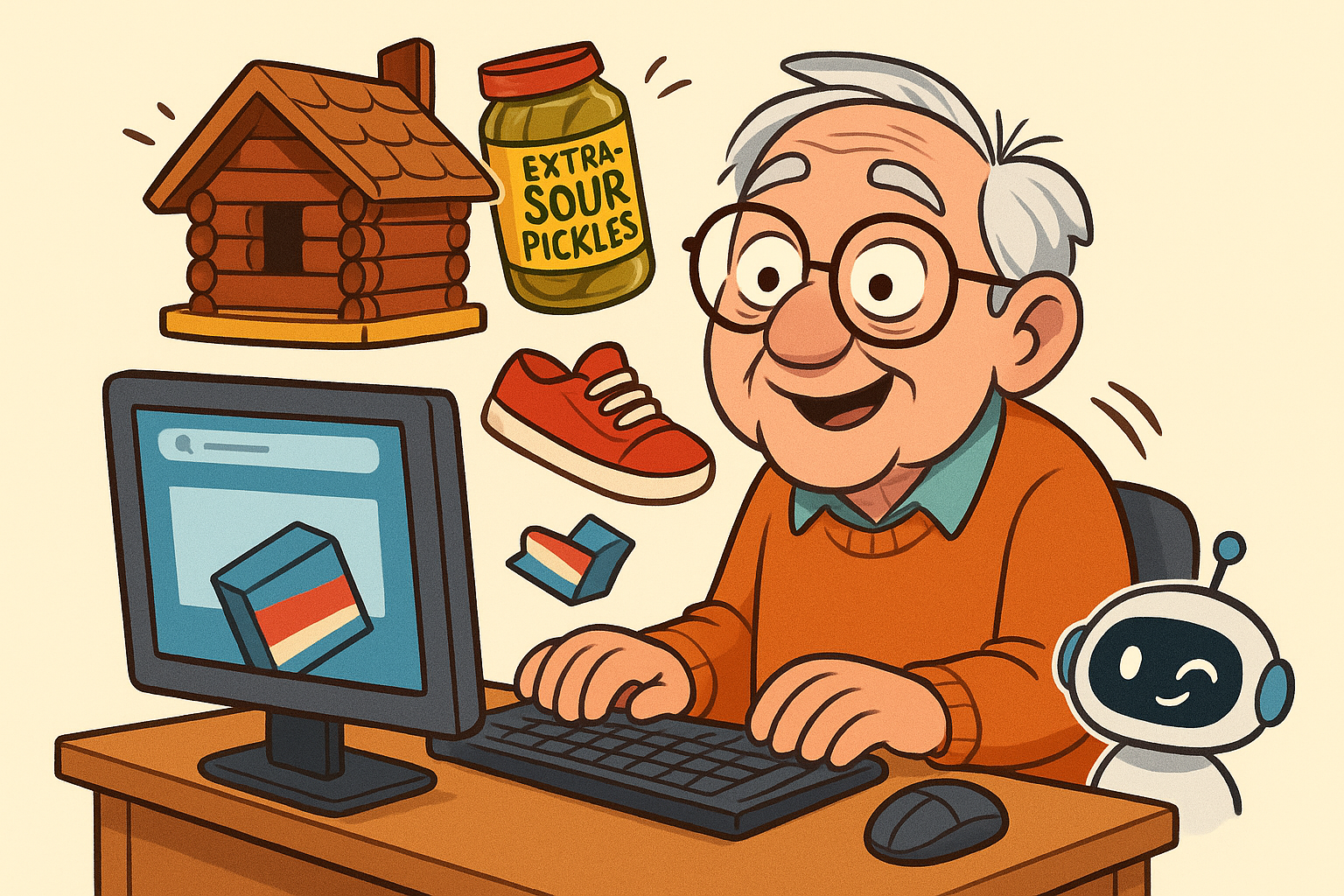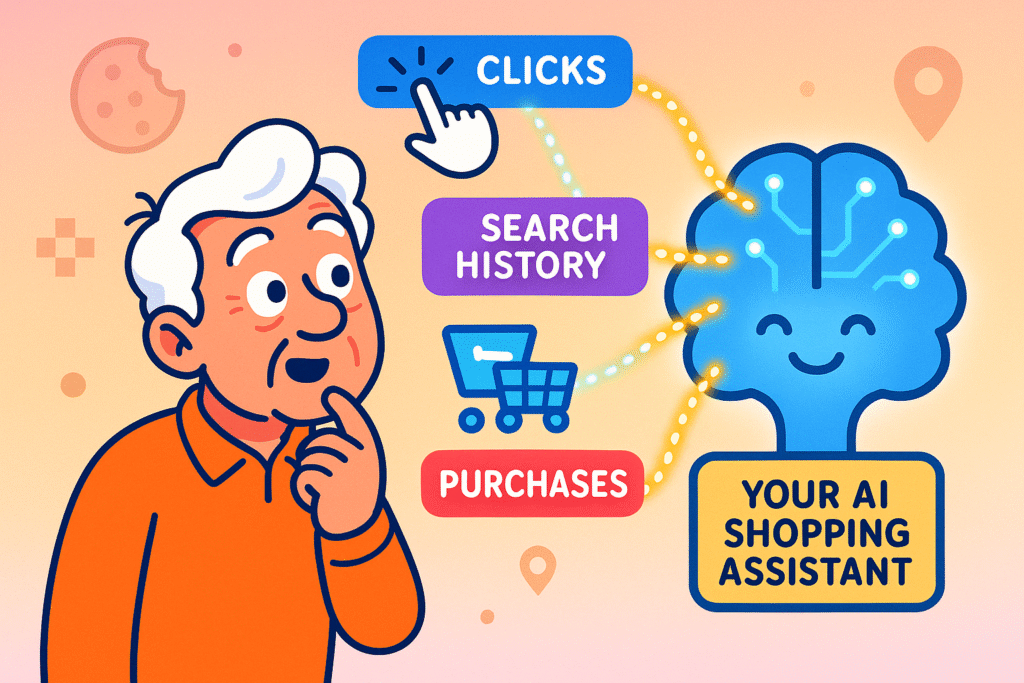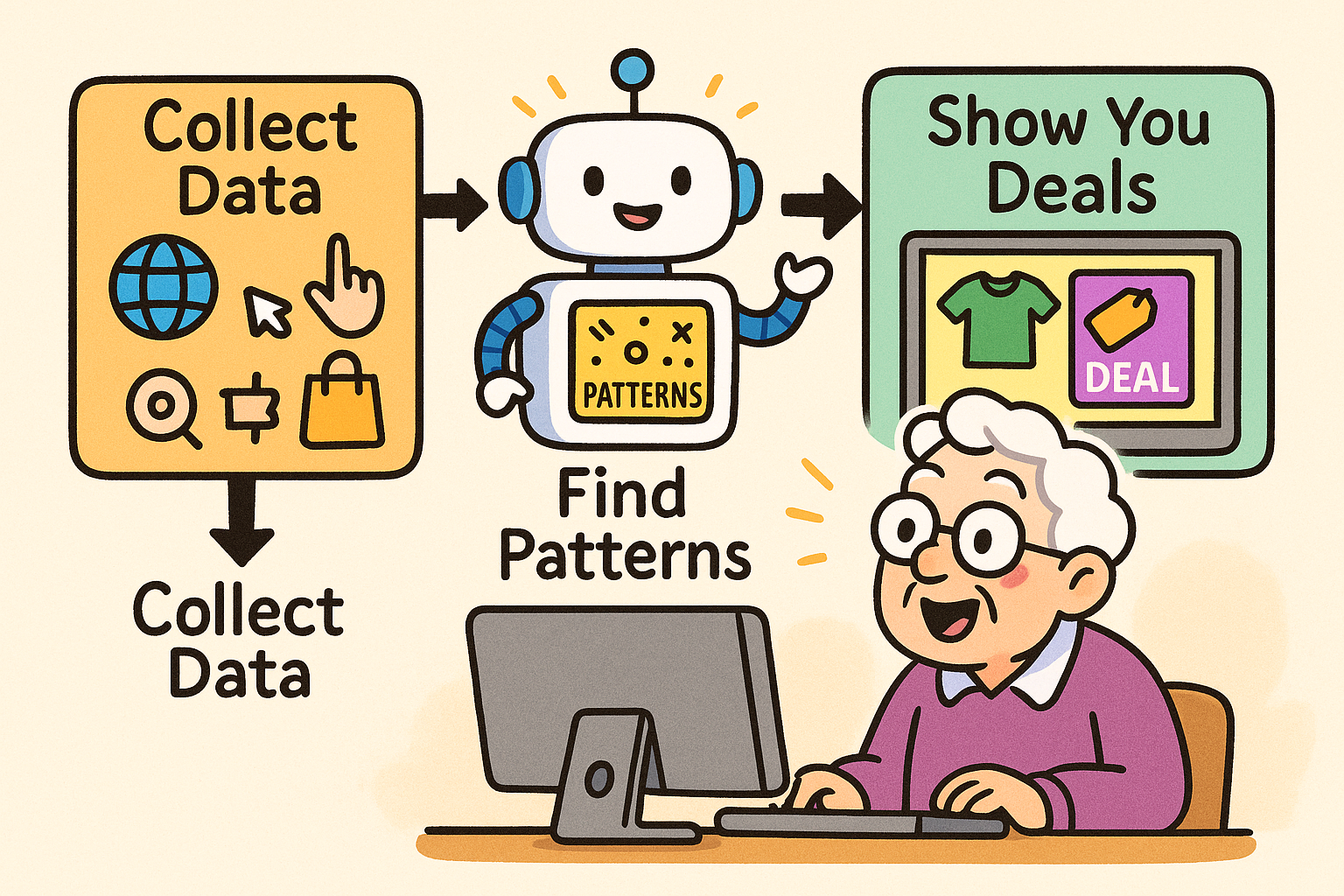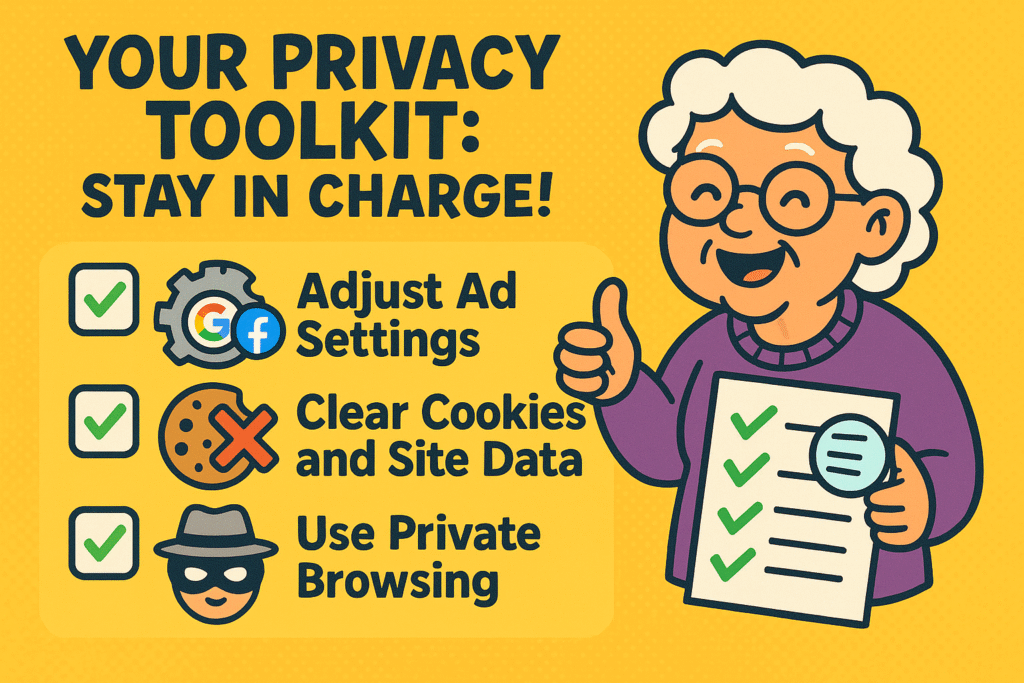
Newsletter Subscribe
Enter your email address below and subscribe to our newsletter


Have you ever had a conversation with your computer that feels a little… one-sided?
You innocently search for a special kind of bird feeder, one that looks like a tiny log cabin. You spend five minutes looking at it, decide it’s a bit much, and move on with your life.
But the internetThe Internet is a vast network of computers and other electronic devices connected globally, allowin... More? The internet does not move on.
Suddenly, that log cabin bird feeder is following you everywhere. It’s peeking at you from the side of your news articles. It’s popping up while you check the weather. You half expect to see it sitting on your dashboard when you get in the car.
It’s as if a tiny, persistent salesperson is living in your computer, whispering, “Psst. Remember the bird feeder? It’s 10% off now.”
If this sounds familiar, congratulations, you’ve met the ghost in the machine: Artificial IntelligenceArtificial Intelligence (AI) is basically when computers get smart—really smart. Imagine if your c... More, or AI. It’s not magic, and it’s (probably) not a sign that your toaster is spying on you.
It’s just a very clever system designed to turn your online window shopping into actual shopping using AI. Let’s pull back the curtain and see how the trick is done.
Imagine you’re walking through a muddy garden. With every step, you leave a footprint. The internet is a lot like that garden, but instead of mud, you’re leaving behind tiny digital footprints with every single click, search, and scrollScrolling is what you do when you move up or down on a screen to see more of a webpage, email, or do... More.
These footprints are made of data: the websites you visit, the things you search for (“extra-sour pickles”), the articles you read, and the products you buy. Websites collect these little clues using things called “cookiesCookies are like tiny reminder notes that a website sticks on your device through your browser. They... More.”
Think of a cookie not as a delicious baked good, but as a digital name tag. When you visit a websiteA website is a collection of interconnected web pages or digital content that are accessible via the... More, it hands your browser a little name tag to wear. The next time you visit, the site says, “Oh, hello again! I remember you. You’re the one who likes sour pickles and log cabin bird feeders.” This is how they remember what’s in your shopping cart or keep you logged in.

Let’s tackle the big one. You mention to your spouse over dinner that you need a new rake, and a few hours later, ads for rakes appear on your computer. It’s spooky! It feels like your phone must be eavesdropping.
The truth is a lot less dramatic and a lot more clever. It’s not your phone’s microphone; it’s your digital footprint. You probably searched for a hardwareHardware refers to the physical components of a computer system or electronic device, as opposed to ... More store’s hours last week, or maybe you bought garden soil online a month ago. Your spouse might have been searching for leaf blowers on the family tabletA tablet is a lightweight, portable device with a touchscreen that you can use to browse the interne... More.
AI connects these seemingly random dots. It’s so good at predicting what you might be interested in that it often feels psychic. It’s like when you buy a new blue car and suddenly see blue cars everywhere—your brain is just primed to notice them. The internet does the same thing, but with ads for rakes.
So, you have all these digital footprints and cookies scattered around the internet. What happens next? This is where Artificial Intelligence (AI) steps in, acting like a super-fast, hyper-organized matchmaker.
This AI isn’t a thinking robot like in the movies. It’s just a very powerful computer program that’s brilliant at one thing: finding patterns. It looks at your digital footprint and compares it to the footprints of millions of other people.
It says things like, “Hmm, a lot of people who searched for ‘log cabin bird feeders’ also bought ‘squirrel-proof suet.’ And they tend to live in suburban areas. The person looking at this feeder fits that pattern perfectly. Let’s show them an ad for squirrel-proof suet!”
This is why Amazon is so good at suggesting things you “might also like.” It’s not a lucky guess. It’s AI pattern-matching. This process is what drives everything from Netflix recommending a new show to a grocery store appAn app (short for application) is a program that helps you do specific tasks on your smartphone, tab... More sending you a coupon for your favorite brand of coffee. These are essentially simple versions of what more advanced AI shopping assistants do to find you the best deals.

Now, this can all feel a bit invasive. A computer knowing you prefer chunky peanut butter is one thing, but it can feel like you’ve lost control. The good news is, you’re still the one in the driver’s seat.
Think of it as a trade-off. In exchange for seeing more relevant ads and deals (instead of ads for skateboards and video games), you share some of your browsing habits. But you have a say in how much you share. Improving your general online safety habits is a great first step.
Here are a few simple ways to manage your digital footprint:

Understanding how this all works isn’t about being scared of the internet. It’s about being a savvy digital citizen. The AI matchmaker can be genuinely helpful, pointing you toward a deal on that new vacuum cleaner you need or a book by an author you’ll love.
By knowing the rules of the game, you can enjoy the convenience without feeling like you’ve lost your privacy. So the next time an ad for a surprisingly specific garden tool follows you around, you can just smile. You know exactly how the magic trick works.
It’s the practice of showing you ads based on your online behavior, like your search history, the websites you visit, and your past purchases. The goal is to show you ads for things you’re actually likely to be interested in.
They collect data from your “digital footprint”—every click, search, and purchase. They use technology like cookies to remember you and then use AI to find patterns in your behavior to predict what else you might like.
It’s almost never because your phone is listening. It’s usually a coincidence powered by predictive AI. You and your friend likely have overlapping digital footprints (e.g., you’ve visited similar places, searched for similar things, have mutual friends online), and the AI correctly guessed you’d both be interested in the same topic.
It’s a bit of both! The good part is you see more relevant ads and can discover products or deals you might have missed. The bad part is the privacy trade-off; companies are collecting data about your habits. The key is finding a balance you’re comfortable with.
This is a classic goof. The AI is smart, but not perfect. It saw you were intensely interested in buying a new lawnmower, so it keeps showing you ads for it. It often doesn’t get the message that you’ve already completed the purchase. It’s persistent, but not always brilliant.